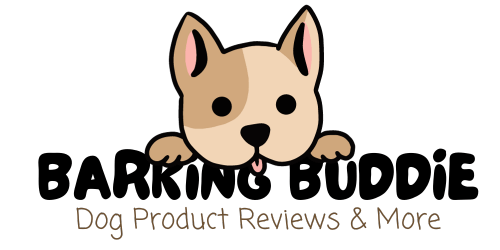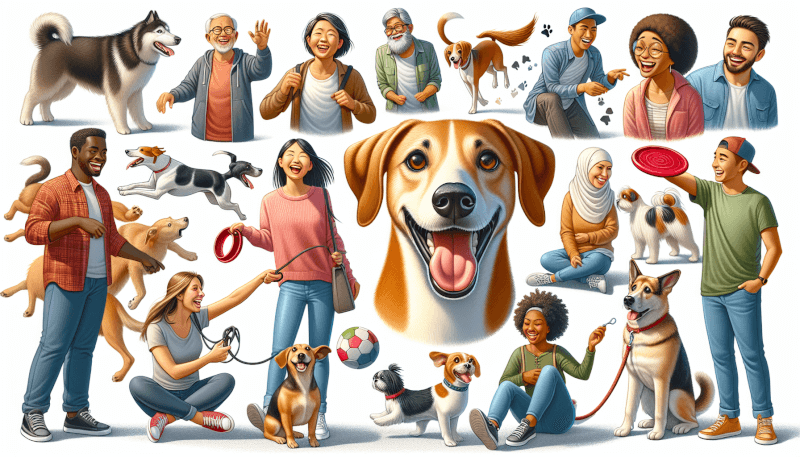Imagine being part of a vibrant and welcoming dog community, where trust and camaraderie flourish amongst fellow dog lovers. Whether you are a new member or an existing one, building trust within this community is paramount for growth and a positive experience. In this article, we will explore some best practices that can help foster trust, creating a strong and supportive dog community that thrives on mutual respect and understanding. From effective communication to responsible ownership, these practices will pave the way for lasting friendships and a harmonious coexistence among our furry companions.

Creating a Safe Environment
Maintaining a clean and well-maintained facility is essential when it comes to creating a safe environment for our dogs. Regular cleaning and sanitization not only prevent the spread of diseases but also ensure a comfortable and hygienic space for both the dogs and their owners. Additionally, regular facility maintenance, such as repairing any broken equipment or fixtures, helps to prevent accidents and injuries.
Establishing clear rules and guidelines is another crucial aspect of creating a safe environment. Clearly communicate the expectations regarding behavior, both for the dogs and their owners. This includes rules on leash usage, proper waste disposal, and acceptable conduct within the facility. By providing these guidelines, everyone involved can ensure their actions align with a safe and respectful environment.
Adequate supervision and monitoring are paramount when it comes to maintaining a safe environment. Having knowledgeable staff members who can keep a watchful eye on the dogs and intervene when necessary is essential. Whether it’s preventing potentially aggressive interactions or mitigating any issues that may arise, adequate supervision helps to create a supportive and secure community for our furry friends.
Effective Communication
Using positive reinforcement techniques is an effective way to communicate with our dogs. Instead of focusing solely on correcting undesirable behavior, we should emphasize rewarding and praising positive actions. By highlighting and reinforcing good behavior, we can encourage our dogs to continue engaging in those behaviors, creating a positive and trusting environment.
Encouraging open and honest communication between dog owners and staff members is also crucial. Establish an atmosphere where people feel comfortable expressing their concerns, asking questions, and seeking advice. By fostering open lines of communication, we can address any issues or misunderstandings promptly, ultimately contributing to a more harmonious and trusting community.
Practicing active listening skills is an essential component of effective communication. When someone shares a concern or a suggestion, it is important to truly listen and understand what they are saying. By actively listening, we show respect and empathy, which not only nurtures trust but also encourages others to voice their thoughts and opinions.
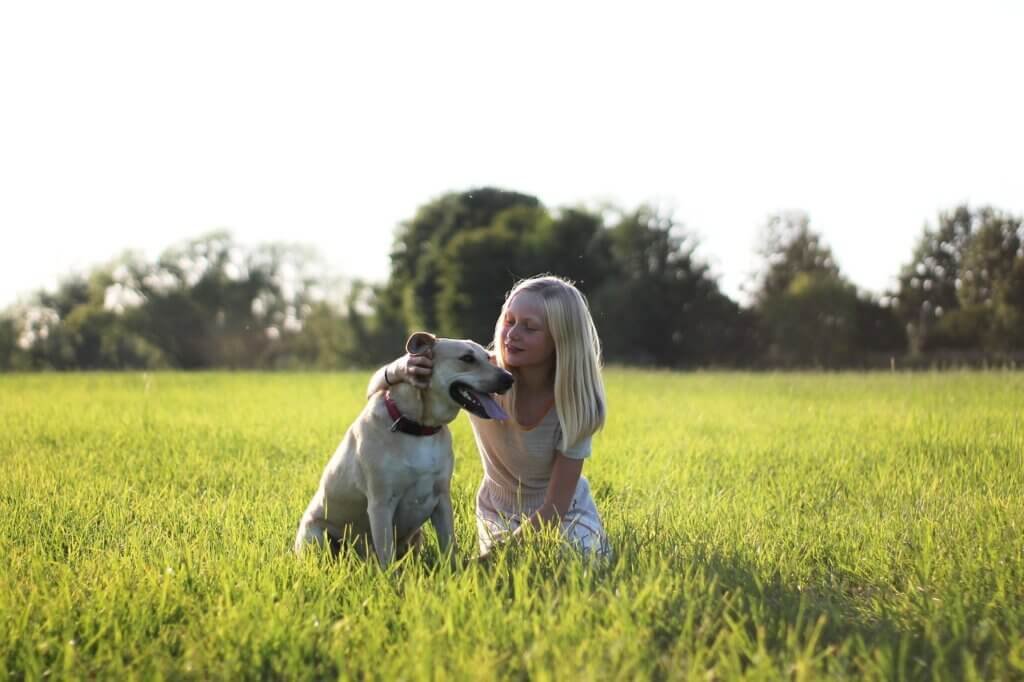
Professional and Knowledgeable Staff
Hiring experienced and qualified dog trainers is vital for maintaining a professional and knowledgeable staff. These trainers should possess the necessary expertise to address the various needs and behaviors of the dogs in the community. Their knowledge and experience can help guide the owners in their training efforts and ensure the well-being of the dogs involved.
Offering ongoing training and professional development opportunities for the staff is equally important. By constantly updating their knowledge and skills, trainers can stay abreast of the latest industry trends, advancements, and best practices. This ensures that they are equipped to meet the evolving needs of the community and provide the highest standard of care and guidance.
Maintaining a high staff-to-dog ratio is crucial for providing individualized attention and support to each dog in the community. With more staff members available, it becomes easier to supervise and manage the dogs effectively. This ensures that every dog receives the necessary care, attention, and guidance, ultimately fostering a trusting relationship between the dogs, the staff, and the owners.
Consistency and Predictability
Establishing regular routines and schedules is essential for creating a sense of stability and predictability within the dog community. Dogs thrive on consistency, and having predictable daily routines can help reduce anxiety and provide a sense of security. Whether it’s meal times, play sessions, or training sessions, adherence to a consistent schedule helps our furry friends feel at ease and build trust in their surroundings.
Ensuring consistent enforcement of rules is equally important. When rules are applied inconsistently, it can lead to confusion and frustration among both the dogs and their owners. By enforcing rules consistently and fairly, everyone knows what is expected, creating a more trusting and harmonious environment.
Providing predictable interactions and activities is another way to establish trust within the community. Regularly scheduled events, such as group walks or training sessions, allow dogs and their owners to anticipate and look forward to engaging with others in a controlled and positive environment. Predictable interactions foster familiarity, which is key to building trust among both humans and dogs.

Socialization Opportunities
Organizing dog playgroups and social events is an excellent way to facilitate socialization among the dogs in the community. These events provide a safe and controlled environment where dogs can interact and learn appropriate social behaviors. When dogs have positive experiences with other dogs, they are more likely to trust and feel comfortable in social settings, enhancing their overall well-being.
Facilitating controlled dog-to-dog introductions is crucial, especially for dogs who may be new to the community or have had negative experiences with other dogs in the past. By carefully managing these introductions, we can ensure that they are done in a controlled and safe manner, allowing for positive associations and gradual socialization.
Promoting positive interactions and appropriate play is essential for fostering trust and maintaining a harmonious community. Encourage owners to teach their dogs appropriate play behaviors, such as respecting personal space and responding to social cues. By establishing guidelines for positive interactions, we can create an inclusive and safe space where dogs can socialize and bond.
Educational Resources
Providing educational materials and resources on dog behavior is essential for enabling dog owners to better understand their furry companions. These materials can include guides on basic training techniques, information on common behavioral issues, and tips for maintaining a healthy and happy dog. By empowering owners with knowledge, we can help them build stronger bonds with their dogs and promote a more informed and responsible dog community.
Offering seminars and workshops on training and dog care is another effective educational tool. These events provide opportunities for dog owners to learn from experts and gain hands-on experience. Whether it’s teaching basic obedience commands or addressing specific behavioral concerns, these educational sessions contribute to the growth and development of both dogs and their owners.
Encouraging continuous learning for community members is crucial for staying updated on the latest industry trends and best practices. Whether it’s through online courses, recommended reading lists, or guest speakers, providing avenues for ongoing learning ensures that dog owners and staff members remain knowledgeable and can provide the highest standards of care and training.
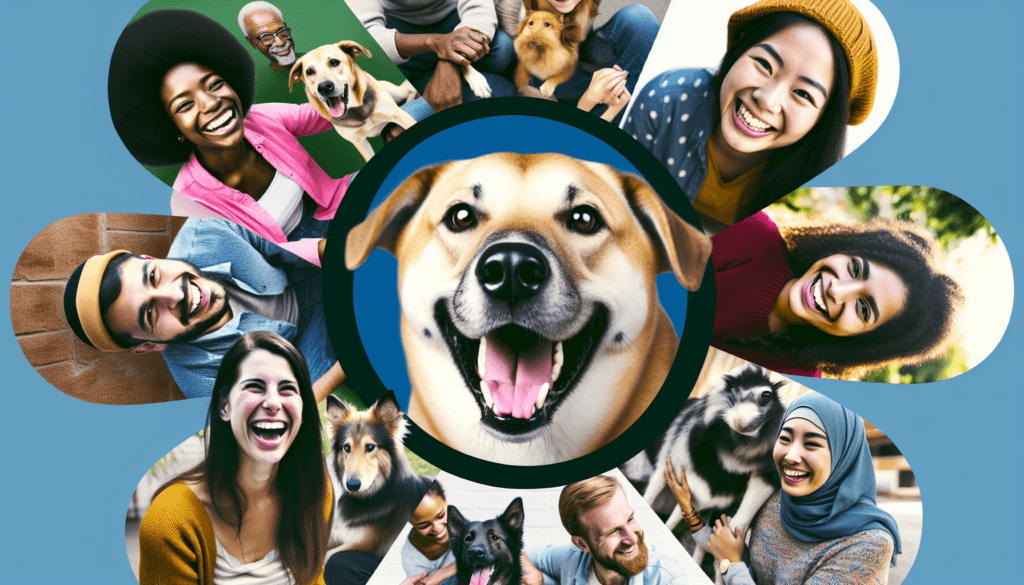
Encouraging Responsible Ownership
Promoting responsible dog ownership practices is vital for building trust and maintaining a safe and harmonious community. This includes advocating for spaying and neutering, responsible breeding practices, and proper ID tagging. By educating owners on the importance of responsible ownership, we can contribute to reducing the number of stray and abandoned dogs, ultimately creating a more responsible and caring community.
Fostering community involvement in dog-related initiatives is another way to encourage responsible ownership. By organizing volunteer opportunities, fundraising events, or community clean-up drives, we can bring people together and create a sense of ownership and responsibility towards the well-being of the entire dog community. When everyone takes an active role, trust and cooperation flourish.
Educating community members about the importance of vaccinations and healthcare is vital for the overall health and well-being of the dogs. By providing information on vaccines, regular check-ups, and preventative care, owners can ensure their dogs are protected from diseases and receive the necessary attention to maintain their health. This not only benefits the individual dogs but also contributes to the overall safety and trust within the community.
Conflict Resolution
Establishing a clear process for resolving conflicts is crucial for maintaining a peaceful and trusting community. Whether it’s a disagreement between dog owners or a conflict involving one or more dogs, having a structured approach helps ensure a fair resolution and minimizes disruption within the community. By clearly outlining the steps to follow in conflict situations, everyone involved can feel confident in the management and resolution process.
Training staff in conflict management techniques is equally important. By equipping the staff with the necessary skills to mediate conflicts and address issues effectively, we promote a culture of respect and understanding. Conflict resolution skills help to diffuse tension, foster communication, and ultimately rebuild trust if it has been affected by a conflict.
Promoting a culture of respect and understanding is vital for preventing conflicts in the first place. By encouraging open-mindedness, empathy, and a willingness to listen to different perspectives, we create an inclusive and supportive community. When individuals feel heard and valued, conflicts are less likely to arise, and trust can thrive.
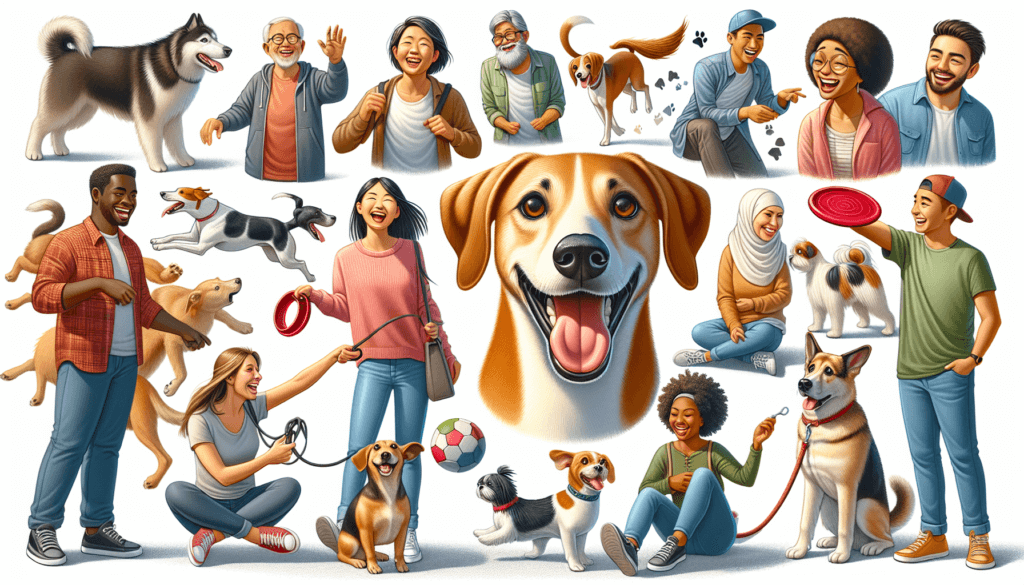
Building Positive Relationships
Facilitating opportunities for dog owners to connect and bond is crucial for building positive relationships within the community. This can be achieved through organized meet-ups, group activities, or even online forums where owners can share their experiences, ask questions, and offer support to one another. Building these connections not only strengthens the community but also helps to foster relationships built on trust and shared experiences.
Organizing community events and gatherings is another effective way to bring people together and build positive relationships. Whether it’s an annual dog show, a dog-friendly picnic, or a fundraising event for a local shelter, these events provide opportunities for interaction and collaboration within the community. Positive relationships contribute to a sense of belonging, trust, and overall community well-being.
Encouraging collaboration and support among members is essential for maintaining a positive and trusting community. By fostering an environment where dog owners share their knowledge, resources, and experiences, we create a sense of unity. Whether it’s exchanging training tips, recommending local services, or offering support during challenging times, collaboration enhances the sense of community and strengthens the bond between dog owners.
Continuous Improvement
Seeking feedback from community members and addressing concerns is vital for continuous improvement. Regularly surveying dog owners, organizing focus groups, or even having suggestion boxes can provide valuable insights and perspectives. By actively listening to the feedback and taking appropriate actions, we demonstrate our commitment to continuously improving the community and building trust.
Regularly evaluating and updating policies and procedures is essential for maintaining a safe and effective dog community. As the needs and dynamics of the community change, it is important to adapt and refine existing guidelines and protocols. By conducting regular reviews and making necessary updates, we ensure that the community remains responsive to the evolving needs of the dogs and their owners.
Adapting to the changing needs of the community is crucial for long-term success. As new research emerges, new training techniques are developed, or community interests shift, it is important to adjust our approach accordingly. By staying flexible and open to change, we can continuously improve the services and support we provide, ultimately nurturing a community built on trust and shared goals.
In conclusion, creating a safe and trusting dog community is a multifaceted endeavor that requires attention to various aspects. By maintaining a clean and well-maintained facility, establishing clear rules and guidelines, providing adequate supervision, and ensuring effective communication, we can create an environment where dogs and their owners thrive. Additionally, by focusing on professional and knowledgeable staff, consistency and predictability, socialization opportunities, educational resources, encouraging responsible ownership, conflict resolution, building positive relationships, and continuous improvement, we can continuously enhance trust and support within the dog community. Through our collective efforts, we can create a dog community that is safe, inclusive, and nurturing for both dogs and their owners.
